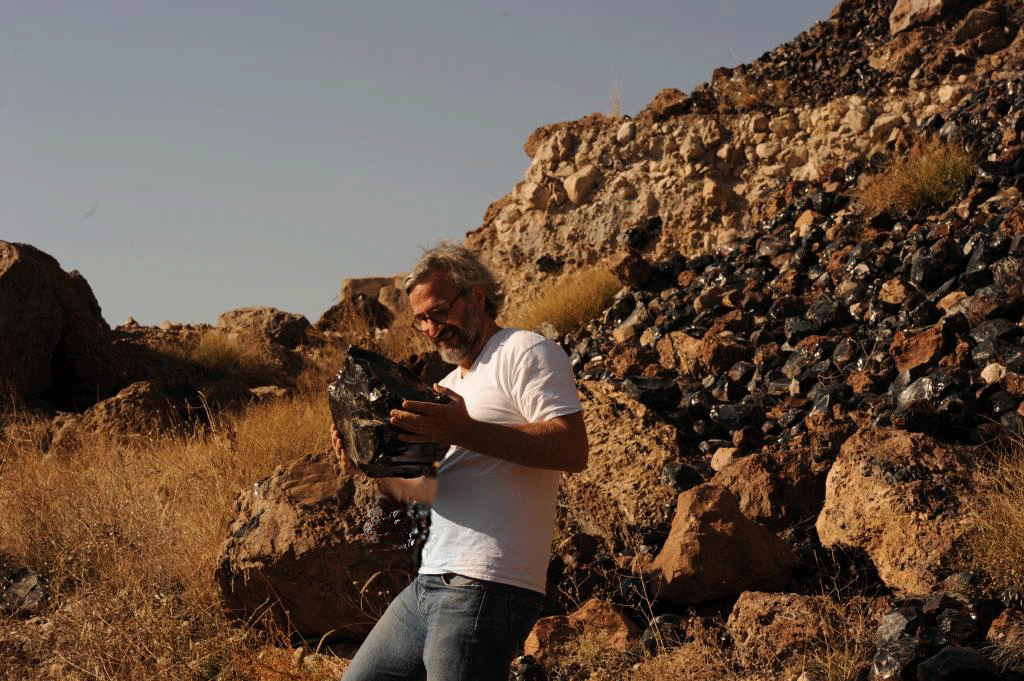In the beginning: Mount Ararat
Obsidian is a semi-precious stone born of volcanoes. It was created hundreds of thousands of years ago, when acidic lava suddenly cooled and vitrified from the thermal shock.

It comes in various colorings: black, gray, blue-gray, brown and red. It takes on different shadings according to its composition, cooling time and impurities.

Obsidian is a rare stone. In fact not all volcanoes produce it. And when they do, the stone is not always of sufficiently good quality for cutting.
cub-ar’s obsidian originates on the slopes of the same Mount Ararat where Genesis tells us Noah’s ark came to rest “By the end of fifty days the waters had receded and on the seventeenth day of the seventh month the ark grounded on a mountain in Ararat.“(Genesis 8:5).
The obsidian from Ararat Mount is highly consistent and renowned for its beauty. And it is the only obsidian in the world that is translucent.
Cut in thin layers, it becomes transparent and the stripes that run through it produce strange designs reminiscent of sumi-e

The stripes form random designs that are visible in transparency.
Several Armenian sites are mined. The most recent date from the Middle Pleistocene (700,000 to 100,000 years ago) while the oldest go back to the Pliocene (4 to 2 million years). Thus the cub-ar obsidian collection contains stones typically 2 million years old!
The history of obsidian is the history of mankind. First used in the remote past for everyday objects, it slowly became a luxury, prized for its black brilliance, its rarity and its beneficial powers.



